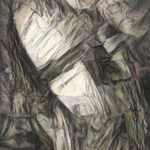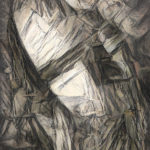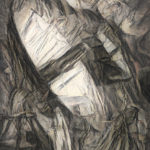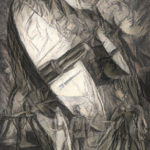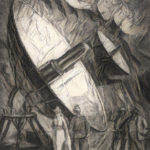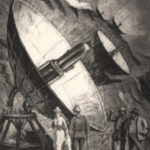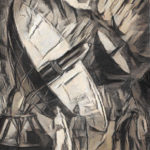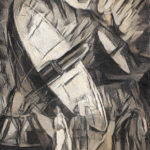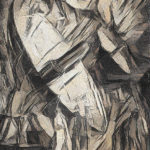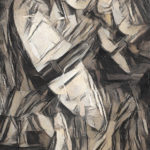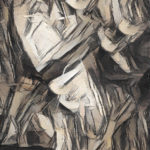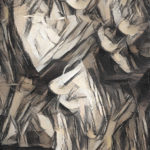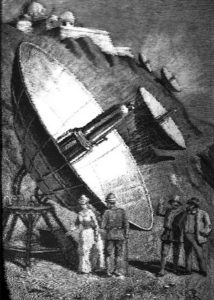
slightly distorted illustration from george roux for andre laurie‘s earth exiles (not jules verne)
+++++++++++++++++++++++++++++++++++++++++++++++++++
The piece will be shown at various places such as Mexico, Porto Rico, and Morocco in 2021. More soon if things go well amid the ongoing Covid situation for independent artists.
For the background of this work, here are some more explanation.
Voyages extraordinaires, Extraordinary Journeys, is generative music of science fiction referring to the collection of 62 novels and 18 short stories from Jules Vernes published in 1866. Verne’s artwork helped build young readers their imagination. The author is fascinated by exploration, the richness of cultures, travel, and especially a form of scientific optimism typical of the time.
Following the example of this futuristic and utopian spirit, the Voyages extraordinaires proposed here transpose these visions into our contemporary culture with the help of a popular song with innocently human appearances. This aesthetic is actually created by an artificial autonomous automatism that futilely transposes the emotion into something intangible.
The sung voice continues the historical chronology of synthetic voices in electronic music. The language of the lyrics evolves and begins with the one of the country in which the piece is presented.
These Extraordinary Journeys convey, and contextualize, the breath of curiosity and exploration; more necessary than ever today.
It should be added that the first industrial revolution was also accompanied by the continuation of colonialism. I think that the work of Jules Vernes can be reread with a constructive eye on the question. As well as the ecological and ALSO social workers’ condition of the time. I will here later get back to these very interesting questions.
The piece, and its subjects, are supposed to be adapted for a “young” audience.
The following text is messy so temporary:
The piece is generative as I often do in such circumstances. This characteristic thus allows me to create a generic version and then construct a specific one that has the language of the place it is being played at. It has humble similarities with Facebook‘s convolutional method for automatic translation. I find the idea of having an intermediate machine language allowing to translation of all possible languages interesting; there is a link with esperanto and other international auxiliary languages. The piece would then be in Japanese if presented in Japan. What would be the language in Switzerland ?
This creates problems, or questions, within the composition process itself. It is foremost a musical piece and less of a theater piece as it often places the listener between a distinct obvious meaning and a more musical apperception. I am for instance always pleased to read the cognitively miraculous James Joyce‘s 1939 Finnegans Wake, in English, beyond its stream of consciousness writing style, literary allusions, free dream, and associations. This “linguistic experiment” is also a “reading experience” that seems to never end. Moreover in 2017, Franck Bauchard kindly invited me to participate in a reading of Finnegans Wake. I once again got a concrete feeling of how different a piece can be perceived when materialized by interpreting it into the physical world.
The algorithm I composed for Jules Verne’s case allowed me to create a similar approach. I catch the listener with a meaning and linear story telling which suddenly diverges onto another meaning or towards a more musical active listening mode. One can often see that in music theater pieces from Georges Aperghis for instance.
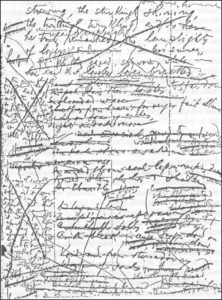
james joyce’s finnegans wake manuscripts _1939
The Covid situation and its consequences are still carrying on in 2021 so the release of the work is postponed a little. In July 2021, I was still working on the first French version of From the Earth to the Moon.
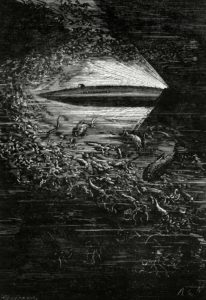
electricity enlightening darkness with the nautilus in twenty thousand leagues under the sea _1870
There are three modes for the voice: narration from an automatic summarizer of the novels (see my old program here), narration-sung and totally sung modes. These are still at an early stage but they may show at which synthetic level we stand in the uncanny valley. The variable prosody of the voice depends on its context and uses. The gender will probably not be as defined as the one in the following examples. As always, the esthetic direction lies between synthetic pureness and human existential inaccuracy. Sophie may be an artist close to that.
Graphic example using generative adversarial networks. Similar perceptive processes happen on rhythms and voices using variational autoencoder (a special thank you to Herren Meier and Goepfer for their inspiration here):
From the Earth to the Moon in French:
I initially had the intention to work on Verne’s Paris in the Twentieth Century published in… 1994. But I found it too local despite its dystopic aspect would also have fit.
